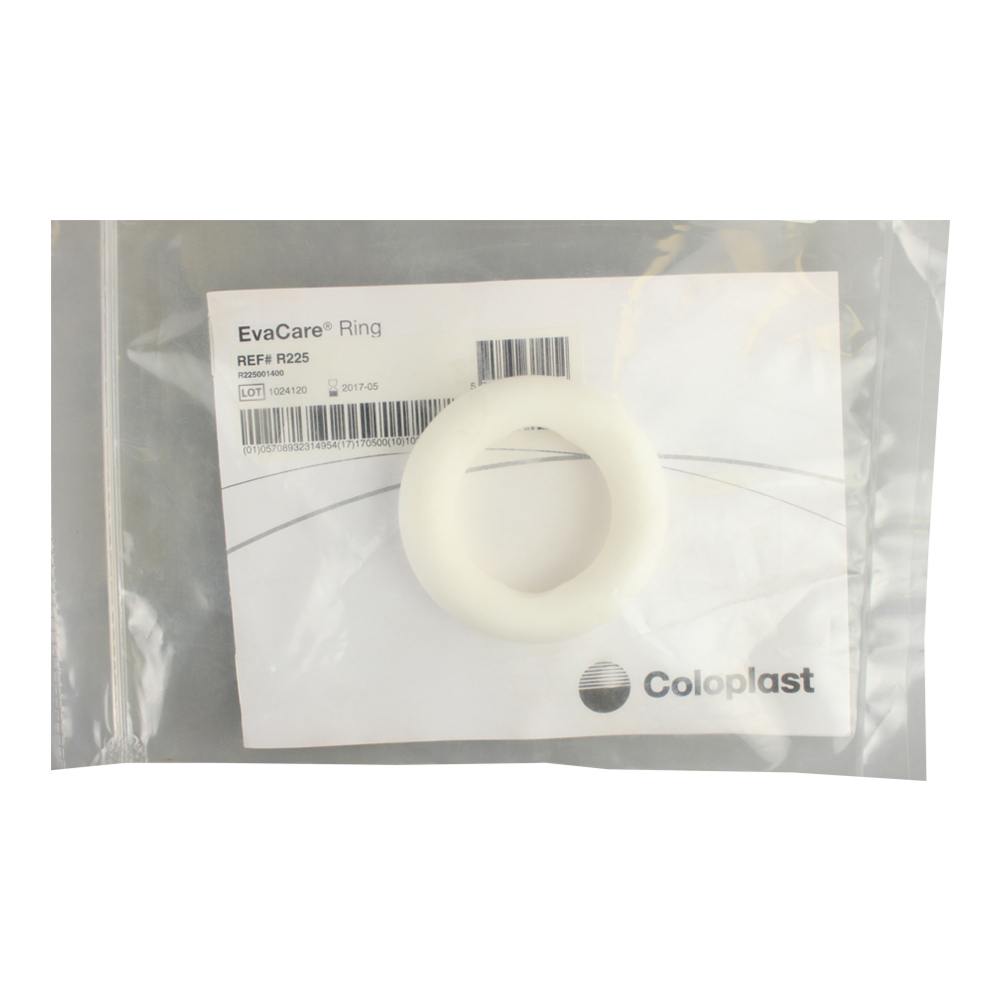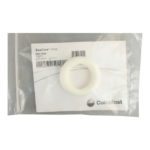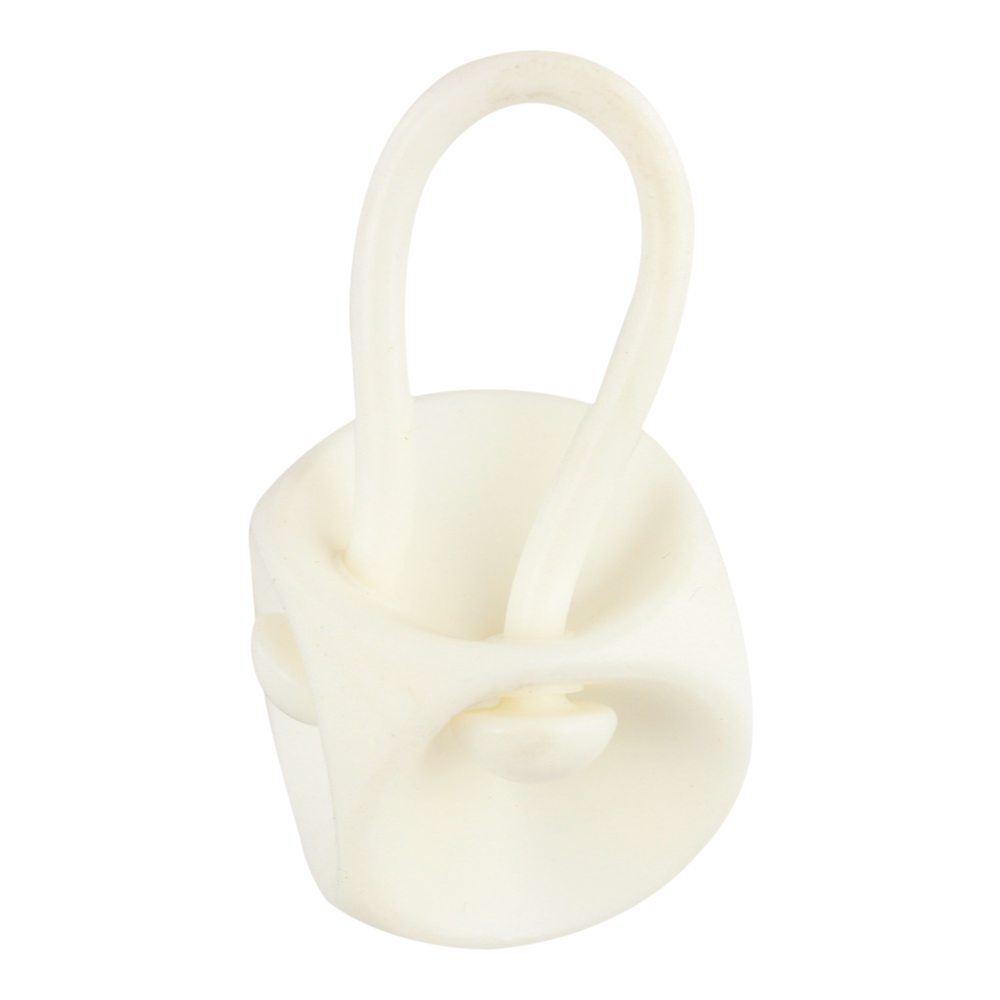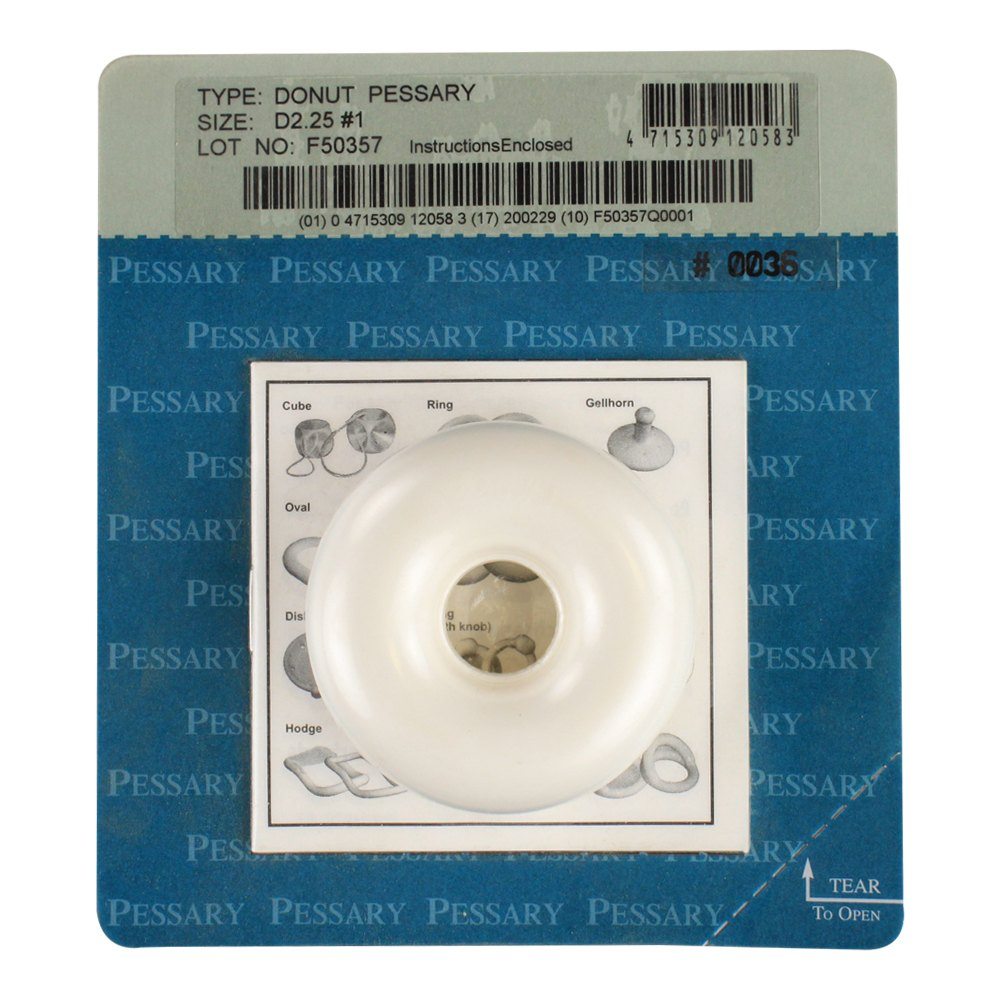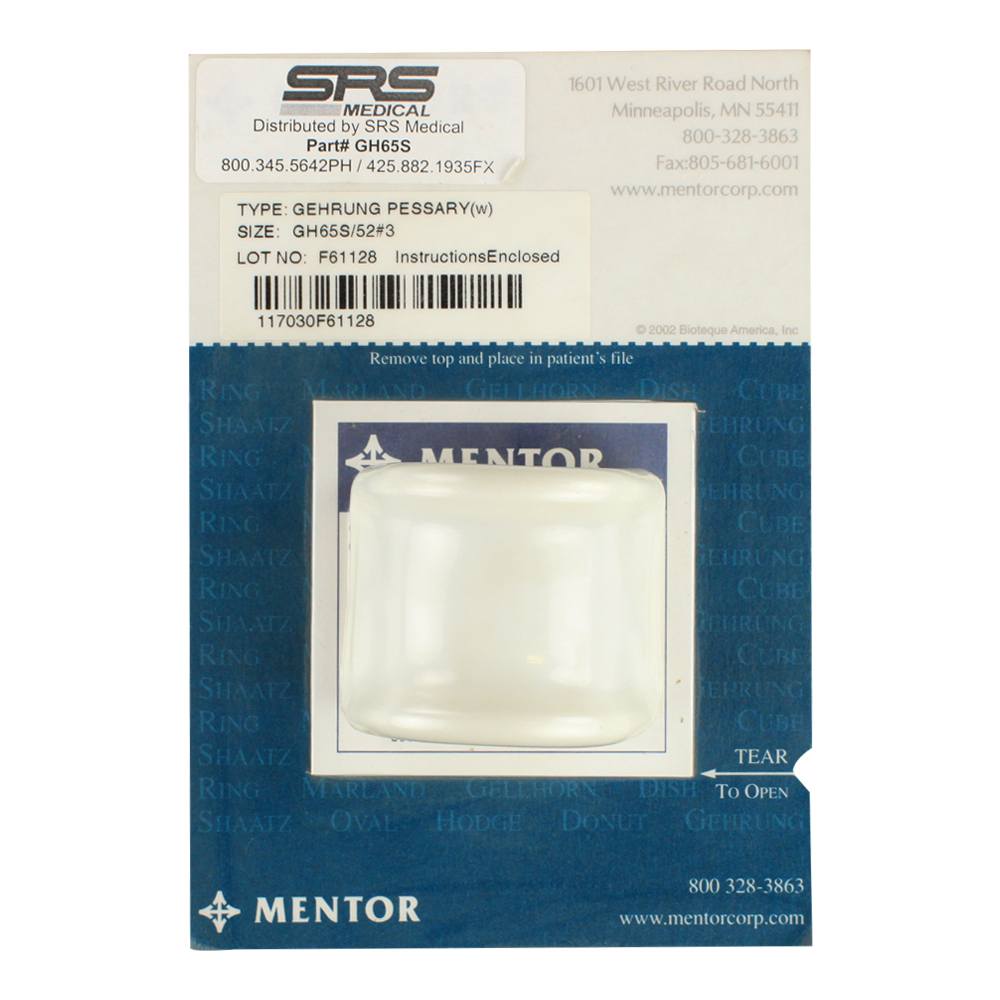- My Account
- Place a Reorder
- Logout
Evacare Ring Pessary
Brand: Evacare
Manufacturer: Personal Med
Lorem ipsum dolor sit amet, consectetur adipiscing elit. Ut elit tellus, luctus nec ullamcorper mattis, pulvinar dapibus leo.
Lorem ipsum dolor sit amet, consectetur adipiscing elit. Ut elit tellus, luctus nec ullamcorper mattis, pulvinar dapibus leo.
DESCRIPTION
DETAILS
Reviews
DESCRIPTION
Evacare Ring Pessary
EvaCare Ring Pessary is made from soft, pliable medical-grade silicone that can be more easily inserted and removed than other brands. Available in a variety of shapes and sizes, with and without support, insertion is easy with the folding action of the Ring. The EvaCare Ring Pessary can help to show what type of surgery may be most beneficial for the patient and can achieve clinical results comparable to surgery, without the additional risk.
Key Features
Highly flexible and soft
Care of the pessary is generally washing with soap and water
100% silicone pessary ring.
- Used as a surgical facsimile for predicting the requirement for anti-incontinence surgery
Diagnostic device during urodynamic testing
Uses
- For assistance with stress and urge incontinence
- First or second-degree prolapse
- Cystocele
Cautions and Warnings
- The pessary may push against other pelvic structures and can sometimes cause trouble with urination, difficulty with bowel movements, or lower back pain.
- Report any of these to healthcare provider right away:
- Any increase in urinary incontinence
- Any vaginal pressure or discomfort
- Any vaginal bleeding, burning, or itching
- Any vaginal sores
- If the pessary falls out frequently
- If the user notice changes in the color, amount, consistency, or odor of vaginal discharge
Common Questions About EvaCare Ring Pessary
How to fit a Ring Pessary?
The size of pessary required must be determined by physical findings with the help of a doctor. It also depends upon ease of self-insertion/removal, ability to have vaginal intercourse, etc. Carefully follow the fitting instructions inside the pessary package. Pessary insertion, removal, and cleaning must be done as instructed. If the patient feels any pain or discomfort, report to a doctor immediately. The pessary should not exert under pressure on the vaginal wall. The clinician should be able to insert a finger between the pessary and vaginal wall. Pessaries are not recommended for those with acute vaginal tract infections.
How does a Pessary Help in Urinary Incontinence?
In women with stress incontinence, the pessary exerts pressure on the urethra to decrease the escape of urine when coughing or sneezing. In patients with urge incontinence (strong, sudden need to urinate), the pessary realigns the bladder to its normal position, allowing it to empty better.
What happens after Fitting a Ring Pessary?
After the first fitting, the user will need to go back to a healthcare provider’s office in a few days to have the pessary rechecked. After that, the user may be checked every few weeks, then every 2-3 months as long as the user has the pessary. If the user experiences inadequate relief of symptoms, be sure to report that to the provider. Over time, the pessary may need to be changed to a different size or shape.
How do you clean a ring pessary?
The cleaning schedule is based on the type of prolapse the user has, the amount of vaginal discharge, and the specific type of pessary. There are two options:
- The user may return to the provider’s office every 2-3 months for a regularly scheduled pessary change. Many older women elect for this option. If the user feels comfortable with the pessary, the user may remove and clean it once instructed in the proper insertion and removal technique. After the user has removed the pessary, wash it with mild soap, rinse well with tap water, and air dry. EvaCare pessaries fold or compress to ease insertion. A small amount of lubricant may be used. Apply it at the vaginal opening and use non-lubricated fingers to insert.
- The user should return to the provider to have the pessary checked once or twice a year. Generally, the pessary will be replaced with a new one after one year of use. When the user is not wearing the pessary, store it in a clean, dry place. The pessary should be used only by the person for whom it was prescribed.
Can a ring pessary be lost in the vagina?
No, the pessary cannot get lost. The vagina is like an open pocket extending only 3-4 inches into the body. The pessary can change its position within the vagina or fall out if it is too small or if there is undo straining during a bowel movement. If that happens, or if the pessary is uncomfortable or the user can feel the pessary at the opening of the vaginal area, do one or two things:
- Insert fingers into the vagina, grasp the pessary and gently pull it down and out. Removal is usually best done lying flat with knees bent and legs apart.
- Push it back in. Reach into vagina until the user touches the pessary. Simply push the pessary in as deep as the user can. If the pessary falls out and is unable to be reinserted, clean the device as instructed. Place it in a plastic bag to take along when returning to the provider’s office.
Can a pessary act as a contraceptive device?
No. It is important to understand that the pessary is not a contraceptive device like the diaphragm. Intercourse is possible with pessaries that do not fill the vagina, such as the ring. Some other types of pessaries must be removed before intercourse.
Downloadable Resources
Related Products
Product Item Number
R2.00, R2.00S, R2.25S, R2.50, R2.50S, R2.75, R2.75S, R3.00, R3.00S, R3.25, R3.25S, R3.50, R3.50S, R3.75, R3.75S, R4.00, R4.00S
PDF File
DETAILS
Reviews
Most orders ship same day
Straightforward and Streamlined
8am - 7pm EST Monday thru Friday
